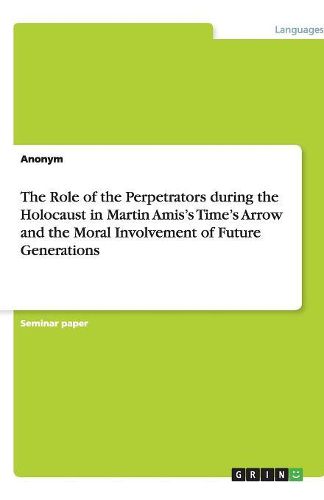Readings Newsletter
Become a Readings Member to make your shopping experience even easier.
Sign in or sign up for free!
You’re not far away from qualifying for FREE standard shipping within Australia
You’ve qualified for FREE standard shipping within Australia
The cart is loading…






This title is printed to order. This book may have been self-published. If so, we cannot guarantee the quality of the content. In the main most books will have gone through the editing process however some may not. We therefore suggest that you be aware of this before ordering this book. If in doubt check either the author or publisher’s details as we are unable to accept any returns unless they are faulty. Please contact us if you have any questions.
Seminar paper from the year 2009 in the subject English - Literature, Works, grade: 1, University of Munster, language: English, abstract: A literary text not only exploits and reallocates cultural discourses and meanings, it also may have such an influence on them that it becomes a medium of cultural memory, contributing to the formation as well as the perpetuation of cultural identity. The present research paper raises the question how Martin Amis’s Time’s Arrow contributes to such cultural discourses and meanings (regarding content). The novel will be analyzed in terms of how it portrays the perpetrators of the Holocaust and which conclusions can be drawn from this specific point of view. The significance of the Holocaust for future generations will also be outlined. The style as well as the content of the novel will be taken into account to analyze how morality is portrayed (2.1. Morality and the ‘Third Reich’) and what consequences arise from this (2.2. Consequences of ‘Third Reich’ Morality). In this respect, the role of the reader in relation to the text will be elucidated (2.3. Moral Involvement of the Reader). The method of analyzing content and style of the novel seems crucial to provide an answer to the raised question: Personally, I’ve always believed in the indivisibility of form and content. […] Style is not neutral; it gives moral directions.
Style isn’t something added on; it’s intrinsic to the perceptions and the way you see life. Postmodern theories of history point out that historical objectivity can not be accomplished: […] historians inescapably interpret, and thus shape, the history they want to document. Particularly, Hayden White stresses the construct character of historical conclusions. [T]here is an inexpugnable relativity in every representation of historical phenomena. Furthermore, in terms of dealing with and interpreting the Holocaust, one has to be aware of the circumstance that the historical narrativization of the
$9.00 standard shipping within Australia
FREE standard shipping within Australia for orders over $100.00
Express & International shipping calculated at checkout
This title is printed to order. This book may have been self-published. If so, we cannot guarantee the quality of the content. In the main most books will have gone through the editing process however some may not. We therefore suggest that you be aware of this before ordering this book. If in doubt check either the author or publisher’s details as we are unable to accept any returns unless they are faulty. Please contact us if you have any questions.
Seminar paper from the year 2009 in the subject English - Literature, Works, grade: 1, University of Munster, language: English, abstract: A literary text not only exploits and reallocates cultural discourses and meanings, it also may have such an influence on them that it becomes a medium of cultural memory, contributing to the formation as well as the perpetuation of cultural identity. The present research paper raises the question how Martin Amis’s Time’s Arrow contributes to such cultural discourses and meanings (regarding content). The novel will be analyzed in terms of how it portrays the perpetrators of the Holocaust and which conclusions can be drawn from this specific point of view. The significance of the Holocaust for future generations will also be outlined. The style as well as the content of the novel will be taken into account to analyze how morality is portrayed (2.1. Morality and the ‘Third Reich’) and what consequences arise from this (2.2. Consequences of ‘Third Reich’ Morality). In this respect, the role of the reader in relation to the text will be elucidated (2.3. Moral Involvement of the Reader). The method of analyzing content and style of the novel seems crucial to provide an answer to the raised question: Personally, I’ve always believed in the indivisibility of form and content. […] Style is not neutral; it gives moral directions.
Style isn’t something added on; it’s intrinsic to the perceptions and the way you see life. Postmodern theories of history point out that historical objectivity can not be accomplished: […] historians inescapably interpret, and thus shape, the history they want to document. Particularly, Hayden White stresses the construct character of historical conclusions. [T]here is an inexpugnable relativity in every representation of historical phenomena. Furthermore, in terms of dealing with and interpreting the Holocaust, one has to be aware of the circumstance that the historical narrativization of the